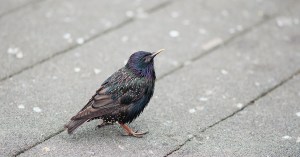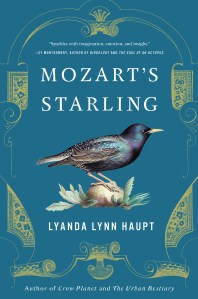The Bird that Inspired Mozart
 Did you know that a starling influenced one of the greatest classical composers in history? Read an excerpt from Mozart’s Starling by Lyanda Lynn Haupt about how this bird came into Mozart’s life.
Did you know that a starling influenced one of the greatest classical composers in history? Read an excerpt from Mozart’s Starling by Lyanda Lynn Haupt about how this bird came into Mozart’s life.
Pet birds and family portraits were both symbols of social rank. Starlings were common, native birds that any peasant could pluck from a nest. It says a great deal that the status-conscious Mozart chose a starling for his pet—it means that he didn’t want just a bird, he wanted this bird.
Where does all of this put Star in the Mozarthaus? For Mozart, there could be only one answer: Where the music was. Where Star could be watched, twitted to, flirted with. Where he could join the music, pester the maestro, pluck at the violin strings, pull at the quill pen, rip the ink bottle. The Mozarts, always, made their own music, their own bohemian life. The elegy that Mozart composed for Star when he died shows such a keen understanding of the starling personality, such a personal knowing of his bird, that the two must have shared each other’s company day to day. “He was not naughty, quite / But gay and bright.” The little yellow statue of Star in the Mozarthaus should go in the study.
On May 27th, 1784, Wolfgang Amadeus Mozart met a flirtatious little starling in a Viennese shop who sang an improvised version of the theme from his Piano Concerto no. 17 in G major. Sensing a kindred spirit in the plucky young bird, Mozart bought him and took him home to be a family pet. For three years, the starling lived with Mozart, influencing his work and serving as his companion, distraction, consolation, and muse.
Join Us on Social
We’re a community for book lovers and their pets!
By clicking ‘Sign Up,’ I acknowledge that I have read and agree to Hachette Book Group’s Privacy Policy and Terms of Use

